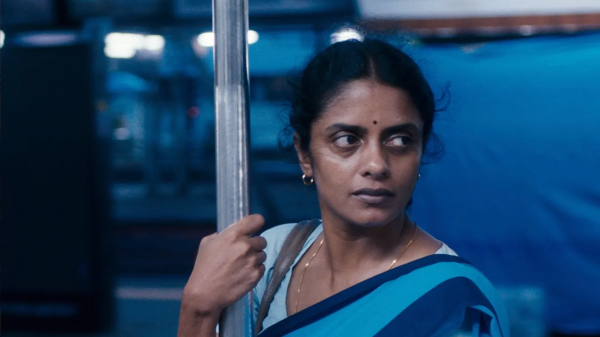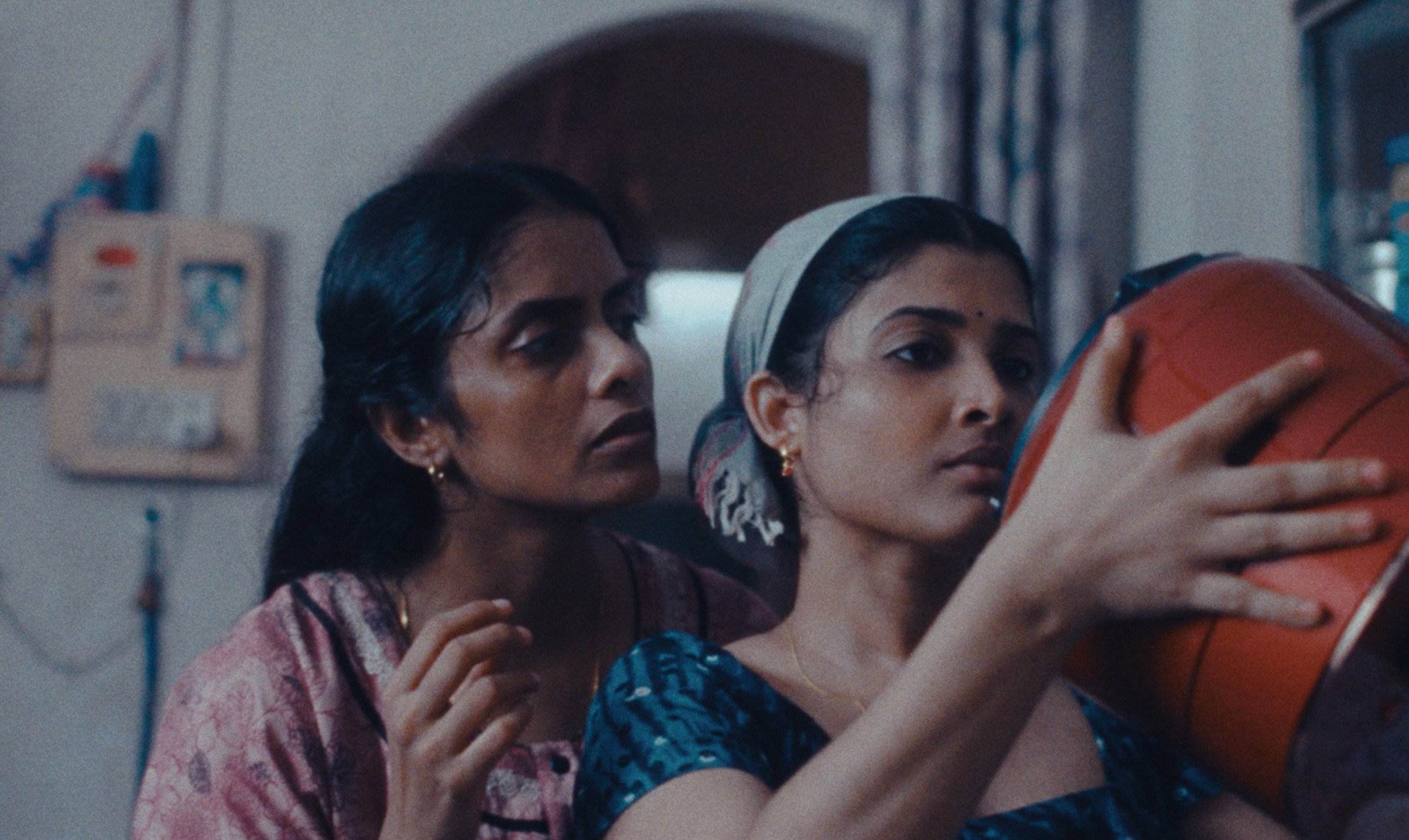In a defining scene from Payal Kapadia’s All We Imagine as Light, Prabha, the protagonist, is seen embracing a rice cooker as if she were making love to it. It’s a powerful moment in this two-hour drama, which won the Grand Prix at Cannes 2024, as it unveils for the first time Prabha’s suppressed yearning for affection. She had been mopping the floor of her drab Mumbai apartment with linen sheets she saved from the hospital where she works as a senior nurse.
The rice cooker, a surprise gift from her husband who disappeared a few months after their arranged marriage, is a monolith-like object, reminiscent of Kubrick’s 2001: A Space Odyssey. Until that moment, she hadn’t dared to look at it or imagine it as a message from another world, where her husband might still be tethered to her. But like many who put on a brave but confused front, Prabha finds solace in abstinence and routine. Yet, in this intimate moment, she gives in to temptation, holding the rice cooker tightly, as if to pull it closer to her.
All We Imagine as Light follows the intertwined lives of three women nurses who have come to Mumbai—India’s maximum city—to work in a hospital. Prabha, played by the wonderful Kani Kusruti, is a rule-abiding, organized, say-no-complaints woman. Her husband left for Germany and slowly drifted away until all contact ceased. Anu, her younger flatmate and colleague, is spirited and wild at heart. She falls in love with a Muslim man and keeps their relationship secret from Prabha, making excuses to meet him. Anu is the beating heart of this movie, and the role is played exceptionally well by Divya Prabha. The third character, Parvaty, portrayed with grace by Chhaya Kadam, is engaged in a battle against a real estate company attempting to evict her from her home. The casting is exceptional and holds the film together.

What connects these three women is the city of Mumbai itself. Kapadia’s use of the Mumbai monsoon as a backdrop deftly avoids the romanticized portrayal of the city often seen in Bollywood. Here, Mumbai is depicted authentically—a city of dreams and illusions. In two pivotal moments when the characters search for their souls, Kapadia includes monologue-heavy poetic odes to the city and its interwoven connection with the lives of ordinary people.
The film’s most striking element is its cinematography, drenched in a beautiful blue filter. The visuals, from powerful close-ups to sweeping long shots and shaky POV angles, enrich the film, thanks to Ranbir Das’s artistry. Kapadia’s influences, possibly drawn from auteurs like Wong Kar-Wai or Sean Baker (whose Anora edged Kapadia to win the top prize at Cannes), are apparent in her Western-style sensibilities.
The music, too, is unbelievably soothing. A melancholic piano underscores scenes, perfectly complementing the quiet lives of the characters. Though minimal, the score is supplemented by natural sounds, a fitting choice for a film centered around Mumbai, where the city itself becomes a soundscape, a cacophony of noise. In the second half, the story shifts to a coastal village in Maharashtra, where the lush greenery, bustling fisherwomen, slow-moving crabs, and the gentle tides evoke a sense of magic. Kapadia paints this world with pure observation, a subtlety that makes the film progressively more captivating.
Throughout the film, there are awkward yet gleeful smiles exchanged in almost every face-to-face encounter. Sometimes these smiles are used as tools to escape uncomfortable situations, to pacify injustice, or simply to push through mundane moments. It’s a coping mechanism, and Kapadia nails this dynamic.
As this quasi-documentary inches closer to its conflict, a layer of mystery emerges. Prabha, seeking reassurance about her life, encounters moments of playful tension. An unexpected resolution to her internal struggle arises, along with clarity about Anu’s situation. Suddenly, the horizon seems boundless, the seas endless, and small LED garlands twinkle brighter than the stars. In this glowing light, Prabha, Anu, and Parvaty share an unspoken bond, while a teenage boy plugging his headphones, oblivious to their story, is lost in a song only he knows.






